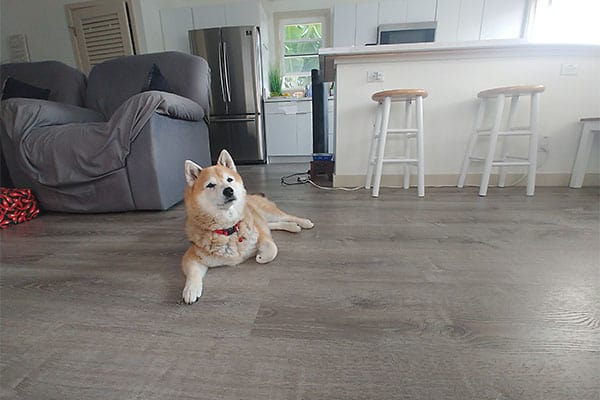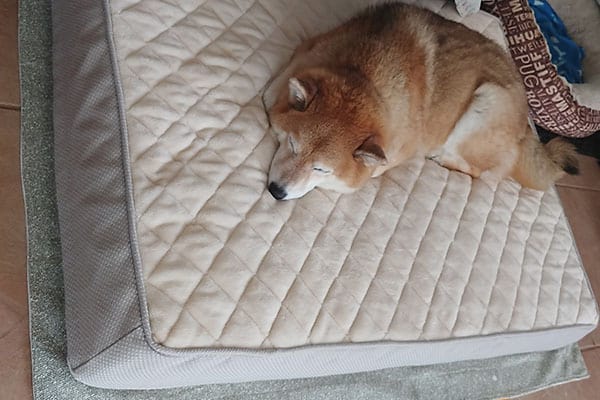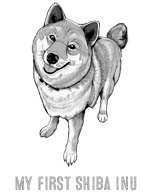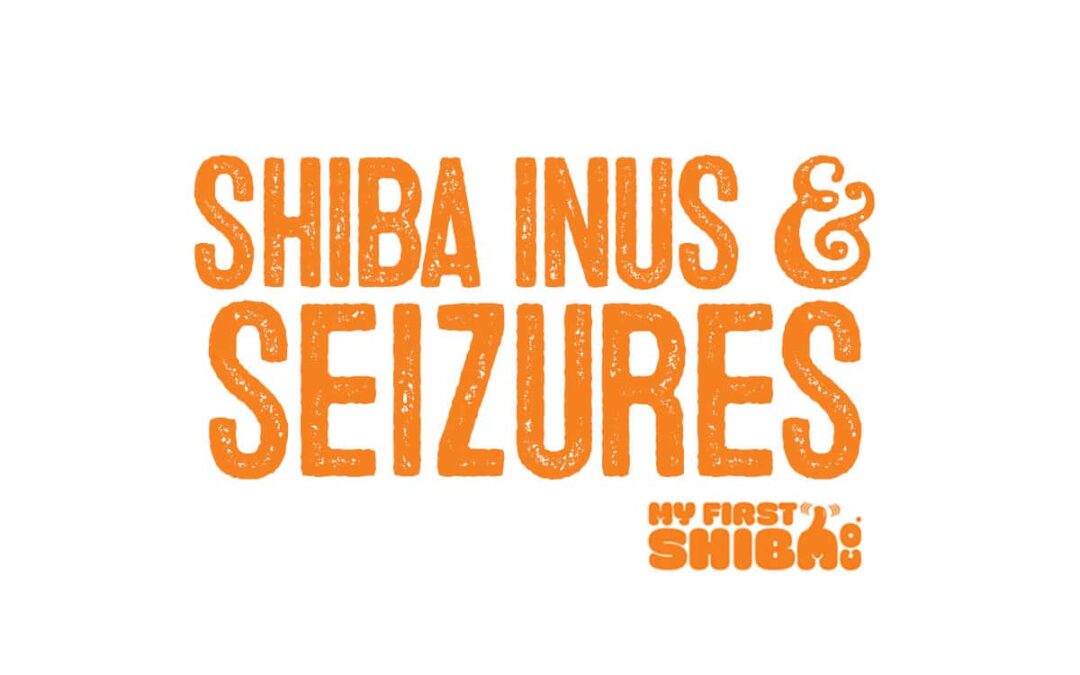On occasion, our posts contain affiliate links. However, we only recommend products that we truly believe in. For more information, visit my privacy policy page.

Having cared for one of my own dogs that developed a neurological disorder, I know first-hand how very scary it can be for owners to experience a pet having a seizure, particularly if they have never seen one in person before.
Hopefully this article will demystify some of the aspects of seizure disorders in dogs and provide helpful information that may ease any anxiety around this topic.
What Are Canine Seizures?
Unfortunately, seizures are a fairly common neurological disorder in dogs.
A seizure occurs when abnormal electrical activity in the brain causes involuntary and repetitive movement of a part or all of the body.
Seizures can be classified in several ways but are usually divided into either generalized or focal.
A generalized seizure is one where the whole body is affected, whereas local seizures occur when the electrical activity is restricted to one part of the brain resulting in abnormal movement in only one body part.
When a seizure occurs, it is often divided into three phases, similar to those described in humans.
The pre-ictal phase occurs before the actual seizure and can sometimes be very subtle.

This is a period of altered behavior in which a dog may hide, appear nervous, or seek out their owner.
They may be restless, nervous, whining, shaking, or salivating. This may last a few seconds to a few hours.
It is believed that this behavior is a result of the dog sensing that something is about to occur.
The ictal phase is the time when the electrical activity in the brain starts to dysfunction and can last from a few seconds to several minutes and can vary in appearance.
The ictal phase can range from mild changes in mental awareness, such as a dazed look and mild tremors, to a complete loss of consciousness and body function (also called a grand mal or tonic clonic seizure).
In those cases, the dog usually falls over and will paddle the legs while seeming to be otherwise paralyzed.
The head will often be drawn backward, and urination, defecation, and salivation may occur.
Usually, these pets do not respond to calls from their owner and do not seem to be aware of their surroundings.
If the seizure has not stopped within five minutes, the dog is said to be in status epilepticus or prolonged seizure.
Focal seizures can be very difficult to diagnose as they can involve as little as a repeated eyelid, ear or lip twitch. Other common focal seizures are called “fly biting” or “chewing gum” as the dog will seemingly bite at the air or clack its jaw with no obvious stimulus.
During the post-ictal phase or the period immediately after the end of the seizure, there is confusion, disorientation, salivation, pacing, restlessness, and/or temporary blindness.
There is no direct correlation between the severity of the seizure and the duration of the post-ictal phase, but this usually lasts for a few minutes to a few hours and then dogs usually return to a normal state.

Causes of Seizures In Shiba Inus
Seizures can also be difficult to diagnose as they are frequently confused with other conditions.
There are several other reasons that dogs may tremor or develop muscle twitching. Dogs with heart disease or blood pressure abnormalities can collapse (this is called syncope) but it can appear very much like a seizure.
If your pet has a seizure, your veterinarian will ask several questions about the nature of the incident and work to rule out other possible presentations.
If it is determined that a dog has had a seizure, the next step is to try to determine the cause.
The reasons for seizures are generally lumped into two categories – those caused by idiopathic epilepsy (IE) and those caused by anything else.
Idiopathic means “the cause is unknown” so idiopathic epilepsy means seizures that are caused by abnormal electrical activity of an unknown source.
As you can imagine, this becomes what is called “a diagnosis of exclusion”.
If all the other causes of a seizure can be ruled out, we are left with IE. IE can develop in dogs from about 6 months to about 6 years old and thought to be due to a combination of genetic and environmental factors.
A small set of epileptics may also have a trigger such as a particular noise, stress, certain lights, etc.
Though any breed of dog can develop epilepsy, there are several breeds that are predisposed to this condition, luckily, Shiba Inu dogs are not one of them!
Other things that can cause seizures can be further divided into intra-cranial (things that are wrong inside the skull) and extra-cranial (problems that originate from outside the brain but can affect its function).
Intra-cranial causes include problems with blood supply and the vessels that feed the brain, as well as bleeding around the brain, inflammation, infection, head trauma, developmental problems, brain tumors and degenerative brain diseases.
Since many of these can be considered “age related”, seizures that start in older dogs are less likely to be caused by IE and more likely secondary to another disease process.
Extra-cranial causes can include things like electrolyte imbalances, Addison’s disease, toxin ingestion, liver disease, heat stroke, hypothyroidism and diabetes.
Your veterinarian may recommend various testing including blood analysis, x-rays, MRI or CT scans and even referral to a board-certified veterinary neurologist for further evaluation.
If any underlying causes are determined, sometimes treatment and management of those conditions will eliminate the seizure activity.
If IE is diagnosed or the seizures are not manageable there are various medications that are used to treat seizures in dogs, these are called anti-convulsants. It is important to note that not all seizures need to be treated.
The criterion for treatment includes seizures that occur frequently (more than once a month), cluster seizures (three or more seizures in a 24-hour period), seizures that last more than five minutes or seizures with an abnormally long or severe post-ictal period after the seizure concludes.
How Are Seizures in Shiba Inus Treated?
There are presently several medications that are used in suppressing seizures in dogs, the four most common include phenobarbital, potassium bromide, levetiracetam, and zonisamide.
Sometimes, more than one medication is needed to control seizures, and these are combined.
Phenobarbital has been the first line therapy for canine seizure control for decades as it is effective, reasonably priced, and can be given twice daily which is relatively convenient.
Blood levels need to be periodically monitored which can become costly over time.
Some lab test changes are associated with phenobarbital usage and are considered “acceptable”.
Phenobarbital is removed from the body by the liver so good liver function is essential for phenobarbital use and phenobarbital can alter the metabolism of numerous other medications.
Side effects of the drug include sedation, which is usually temporary during the first 1-2 weeks of medication use and wanes as the patient's body adjusts.
The patient is likely to be unusually hungry and thirsty on phenobarbital and this can sometimes be profound.
Potassium Bromide was used for human seizure control for a long time until the development of phenobarbital, but it is still an effective drug for seizures and is often added as a second line medication when one is not enough to obtain adequate control.
Potassium bromide is associated with pancreatitis and should not be used in patients with a history of that disease.
Potassium bromide can also take several months to reach a stable blood level which could leave the patient vulnerable to seizures while it accumulates in the system.
As with phenobarbital, there are monitoring tests associated with potassium bromide use and this medication can also cause sedation.
Levetiracetam (brand name Keppra®) is popular for epilepsy in dogs because it has been shown to be fairly reliable and has minimal side effects.
There are no monitoring tests recommended for its use and it has a rapid onset compared to most other seizure medications.
An extended-release formula allows for twice daily use, but this formula is only available in doses for dogs above about 40 pounds so in smaller dogs this medication needs to be dosed three times a day which can be inconvenient for some owners.
Zonisamide (brand name Zonegran®) is a sulfa class anticonvulsant medication that is rapidly becoming a first line treatment choice but might also be used to supplement more traditional therapies.
Due to its classification as a sulfa drug, it is vulnerable to the side effects associated with other sulfa medications: mostly tear production/ dry-eye issues but also some immune-mediated reactions. Humans with a known sulfa allergy should not handle this medication as it can cause a severe and sometimes deadly reaction.
Zonisamide can be used twice a day in dogs and is generally very well tolerated.
There are several other drugs have been used for treatment of seizures in dogs including Topiramate, Imepitoin and Felbamate.
Some of these have also been found to be affective but are either difficult to obtain or prohibitively expensive.
Purina has also developed a diet that has been shown to be helpful in controlling seizure activity in dogs called NeuroCare though this is considered an adjunct treatment.
If your pet needs anti-convulsant your veterinarian will walk you through the options and since seizure medicine needs to be given life long, they will determine the best treatment for your pet and lifestyle.
What To Do If Your Shiba Inu Has a Seizure?
If your Shiba Inu has never had a seizure before or is on medication but has a “breakthrough” seizure, it is helpful to know what to do in the moment if you come upon your Shiba in the midst of a seizure.
The very first step is important—don’t panic! While it may seem much longer in the moment, most seizures only last for a minute or so and don’t cause any long-term damage.
During the seizure, simply remove anything from your Shiba's surroundings that might pose a risk, like furniture, and let the seizure run its course.
If your Shiba is in a risky situation, like at the top of the stairs or in the street, try to gently move them to a safer spot.
DO NOT put anything in your Shiba mouth, because you may inadvertently make it hard for them to breathe. This also includes your hands.
Dogs in the midst of a seizure are often unaware of their surroundings and powerful jaw muscle contractions may lead them to inadvertently bite down during the episode so keep your hands and face clear of their mouth, particularly if you need to move them.
After the seizure is over, keep your Shiba in a safe area and monitor them until they come out of their post-ictal phase.
Once they are steady on their feet and are mostly back to normal, you can give them a little water and take them outside for a potty break.
Wait a bit longer before you offer some food.
If this is a single breakthrough seizure, inform your veterinarian.
They may instruct you to give additional doses of their medication but a breakthrough episode can be expected here or there.
It can be helpful to keep a log of when these occur so you can evaluate for possible triggers and to help your veterinarian adjust your dogs medication if needed.
If this is a new seizure, your veterinarian will most likely want to see your dog for evaluation and will have you monitor until you can schedule an appointment.
There are times, however, when seizures can be dangerous and are considered an emergency. Get to a veterinarian immediately if your dog experiences any of the following:
• A seizure that lasts longer than 5-10 minutes
• Seizures that cluster together and don’t give the dog enough time to recover in between • More than two seizures in 24 hours
• Your dog has had a known or suspected toxin ingestion that could be causing seizure activity If any of these occur please seek out veterinary care at a 24 hour emergency facility if possible.Is There a Way To Prevent Seizures in My Shiba Inu?
While seizures often cannot be prevented, there are certain medications and preventatives that your veterinarian will recommend avoiding as they can reduce the seizure threshold and make them more likely to occur.
Always remind your veterinarian of any seizure medications your Shiba may be taking so they can check for any potential interactions.
Seizures in your Shiba Inu can be very scary but most dogs with seizure conditions have a good prognosis with appropriate management.
If you ever suspect your Shiba may be having or has had a seizure, do not hesitate to contact your veterinarian for further guidance!

Thanks for visiting Myfirstshiba.com! We do our very best in providing our readers with awesome content about our beloved Shiba Inu breed. Some of our articles include reviews and recommendations to our favorite products. We do occasionally earn commissions from certain affiliate links that help support our work and mission. Thanks again for visiting. Shiba Kisses To All!

